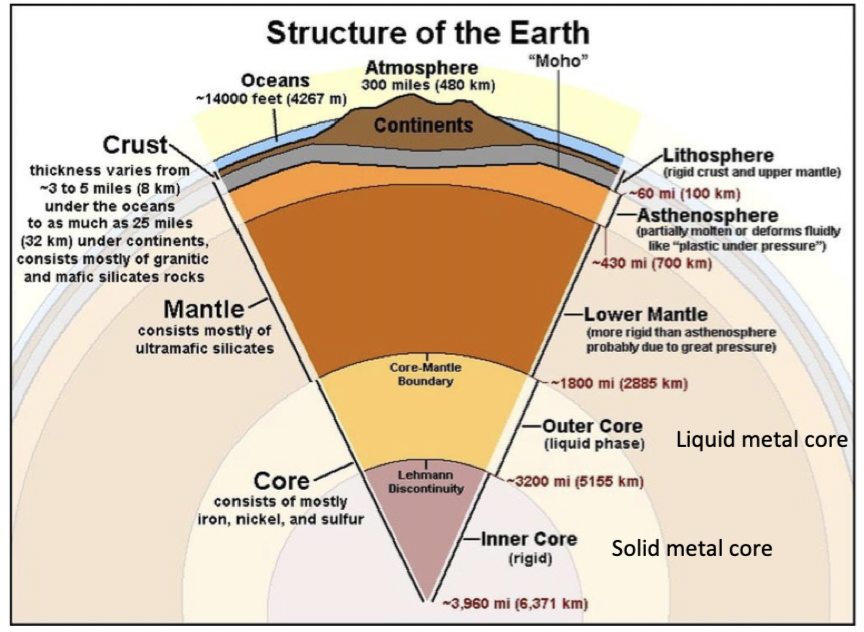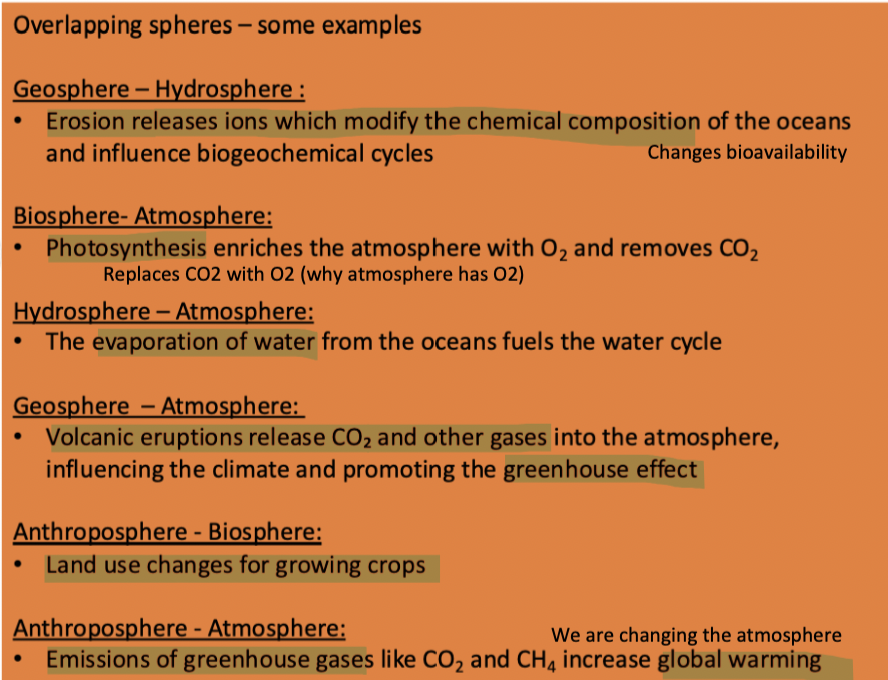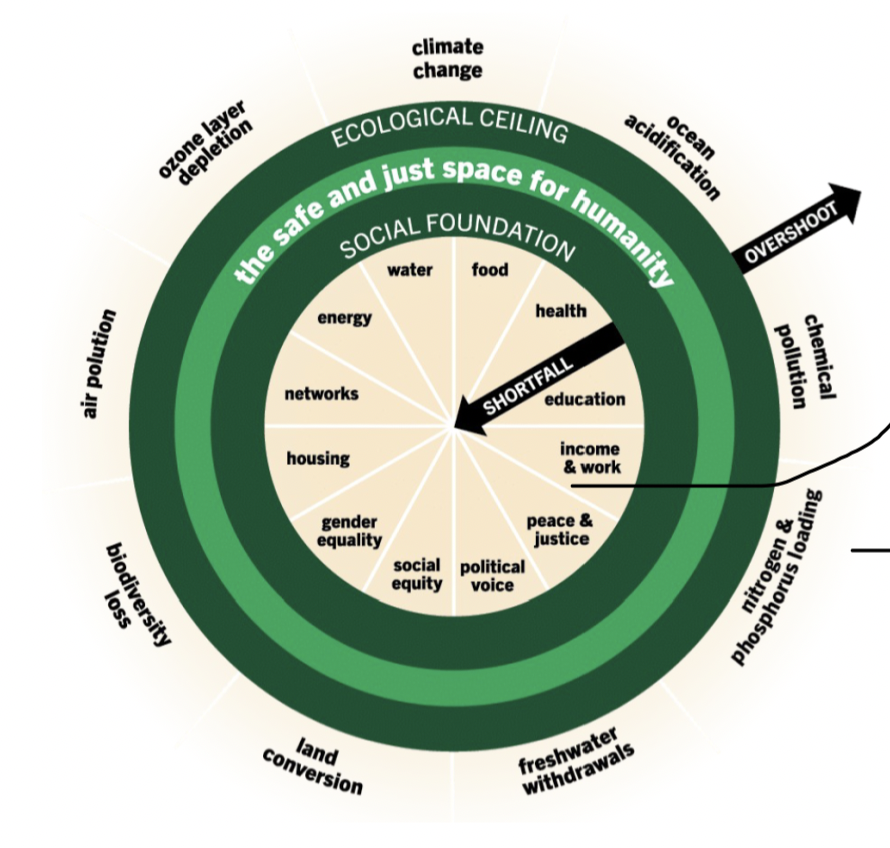EVS 1101 Chapter 1
1/44
Earn XP
Description and Tags
Introduction to Environmental Sciences
Name | Mastery | Learn | Test | Matching | Spaced |
|---|
No study sessions yet.
45 Terms
The Big Bang
matter condensed into single dense point 13.8 Ga
extreme heat made unstable, lead to rapid expansion
Vastness of space
big bang led to this
unknown how many stars/galaxies in the Universe - believe its infinite
The milky way
our galaxy
formed 13.6 Ga
grew from 1 or several overdensities (increased areas of mass, form nuclei of galaxies) shortly after the Big Bang
200-400 billion observable stars
contains our solar system
star
celestial body of gas that shines by radiation derived from nuclear fusion reaction
nuclear fusion reactions
crushing of elements to allow new elements to form
ex. sun - hydrogen fuses to form helium
what is one of the most important characteristics of a star
mass - this size determines a stars lifespan, behaviour during its evolution, and the end of its life
must have minimum mass for the conditions of temperature and pressure within the central region (core) to allow for initiation and maintenance of nuclear reactions
the bigger mass, bigger the star, as more nuclear reactions can occur
solar system
created 4.6 Ga
began when a gigantic cloud of gas and dust covered with ice began to collapse under its own gravity
"second-generation" meaning it formed from material recycled from earlier stars.
precursors leading to Earth
collapse of cloud of dust → formation of protostar + protoplanetary disk (with protoplanets) → sun formation at centre via nuclear fusion
thus, the progressive agglomeration/accretion of dust gave rise to planetesimals, which gave rise to 8 planets and satellites
oxford languages definition of life
The condition that distinguishes animals and plants from inorganic matter, including the capacity for growth, reproduction, functional activity, and continual change preceding death
E. Javaux, Ulièges definition of life
Life is a series of chemical processes confined in a compartment (cell), exchanging energy and matter with its environment and transforming it (metabolism), reproducing itself through the transfer of information (genetic code) by natural selection
NASA definition of life
Life is a self-sustaining chemical system capable of Darwinian evolution
habitability
set of conditions necessary for life (even if it does not itself exist)
ex. a house - people can live in a house
3 criteria for planetary habitability
source of energy
chemical elements essential for life
liquid water (at optimal temp. and pressure)
habitabile zone
the defined area around a star, where temp. conditions allow for liquid water to exist on planet surface
earth is is the habitable zone of the sun
geosphere
solid (physical) part of the earth, includes rocks and minerals
3 parts: core, mantle, crust

core
rich in Fe and Ni
heavy metals that sink down
mantle
variable composition (Fe, Mg, Al, Si, and O)
less heavy elements, still some
crust
rocky outer “skin” composed of O, Si, Al, Fe, Ca, Mg, Na, etc
continental crust
thick, primarily granite
Oceanic crust
thinner, primarily composed of basalt
tectonic plates
created by the internal heat of Earth drives convection currents in mantle, that causes movement of overlying crust
15 main tectonic plates
when they move, they collide, driving surface geographic processes (ex. formation of new crust, earthquakes, volcanism, mountain building)

hydrosphere
combined mass of water found on, under, above surface of earth
oceans, glaciers, ice, underground, atmosphere, rivers and lakes, living organisms, ground
cryosphere
all masses of ice, snow, frozen ground (permafrost) present on earth
atmosphere, what are gases composing it
gaseous envelope surrounding certain celestial bodies (ex. earth, venus, mars)
N2 : 78.08%
O2 : 20.95%
Ar : 0.93%
CO2 : 0.041% - but increasing
water vapor + few noble gases Ne, He, Kr, Xe, H2
biosphere
areas where life develop - all living organisms on Earth and habitats they occupy (ie. planets ecosystems)
anthroposphere
human presence throughout the Earth system
not just our physical being - culture, technology, built environment, associated activities
appeared 1Ma
rapidly changed all other spheres
how do different spheres interact?

environment
everything that surrounds and affects an organism (biotic and abiotic)
ecology
study of living beings and their interactions
environmental issues and history
environmental issues have persisted throughout human history (not new problem)
Prof. Jared M. Diamond: collapse of pre-industrial civilizations were self-inflicted ecological disasters. factors like environmental damage, climate change, globalization, population growth, and poor political choices have historically led to societal collapses.
Sumerians - example of how anthropogenic activity created problems which were accelerated by natural processes
Ancient civilization 4100-1750 BCE
first to build cities - collectivization of human race
depended on irrigated agriculture, diverted water from Euphrates (river) → causing evaporation rate and salt concentration to increase (salinization) in fields over centuries → contributed to climate change - drought → reduced agricultural production → collapse of civilization (emigration, depopulation, wars)
what is meant by “earth is a closed system”
nothing enters or leaves planet in large quantities
resources are finite limited
waste does not disappear
planetary boundaries
set of 9 environmental limits within which humanity can safely operate to maintain Earth's stability and resilience
proposed framework to describe limits to the impacts of human activities on the Earth system
beyond these limits, no longer able to self-regulate, earth system would leave period of stability

climate change - planetary boundary
Refers to the concentration of greenhouse gases in the atmosphere. Staying within safe limits is crucial to maintaining a stable climate
stakeholder: atmosphere
main driver: global greenhouse
Biosphere Integrity - planetary boundary
Includes genetic diversity (biodiversity loss) and functional diversity. Loss of species and ecosystems undermines Earth's resilience.
stakeholder: biosphere (land and sea)
main driver: over exploitation and pollution
Stratospheric Ozone Depletion - planetary boundary
The reduction of the ozone layer increases harmful UV radiation, posing risks to life.
stakeholder: atmosphere
main driver: ozone depleting substances
ocean acidification - planetary boundary
change in pH of ocean (make too acidic), it reduces marine biodiversity and damages coral reefs.
stakeholder: biosphere (sea)
main driver: CO2 emissions
biochemical flows - planetary boundary
Refers to the global cycles of nitrogen and phosphorus. Overloading these nutrients in ecosystems changes how life is supported and causes pollution and dead zones.
stakeholder: biosphere (sea)
main driver: fertilizer in agriculture and waste water
land system change - planetary boundary
Involves the conversion of forests, grasslands, and wetlands into agricultural or urban areas, affecting ecosystems and carbon storage.
stakeholder: biosphere (land)
main driver: over exploitation and pollution
freshwater use - planetary boundary
Relates to the consumption of freshwater resources. Excessive use can disrupt ecosystems and water availability.
stakeholder: lithosphere
main driver: freshwater resources within the Earth's crust (outermost layer) - both surface water and groundwater
Atmospheric Aerosol Loading - planetary boundary
microscopic particles in atmosphere from pollution, which affects air quality, climate systems, and living organism.
stakeholder: atmosphere
main driver: from burning of fuels
novel entities - planetary boundary
Refers to organic pollutants, radioactive materials, nano-materials, and microplastics. Things made more and more since industrial revolution occurred, and we are releasing into environment disrupting ecosystems.
stakeholder: atmosphere, biosphere, lithosphere (crust and upper mantel)f
main driver: human made products
earth overshoot day
day when humanity's demand for ecological resources and services exceeds what Earth can regenerate in that year.
over time, we are using more and more resources relative to what earth can supply - Earth Overshoot Day has been moving earlier over the decades. In the 1970s, it fell later in the year, but now it often occurs in late July or early August, signalling increased unsustainable consumption.
doughnut economics
provides perspective on realistically balancing the needs of people “social foundation” with the limitations of our planet “ecological ceiling”
meeting of anthroposphere and natural world → foundations for environmental science
anything that falls outside doughnut results in irreversible poverty or irreparable environmental damage
emphasizes need to maintain a balance between our needs and sustainability

sustainability
the goal
meeting our own needs without compromising the ability of future generations to meet theirs
requires a complex balancing of social, environmental, and economic aspects